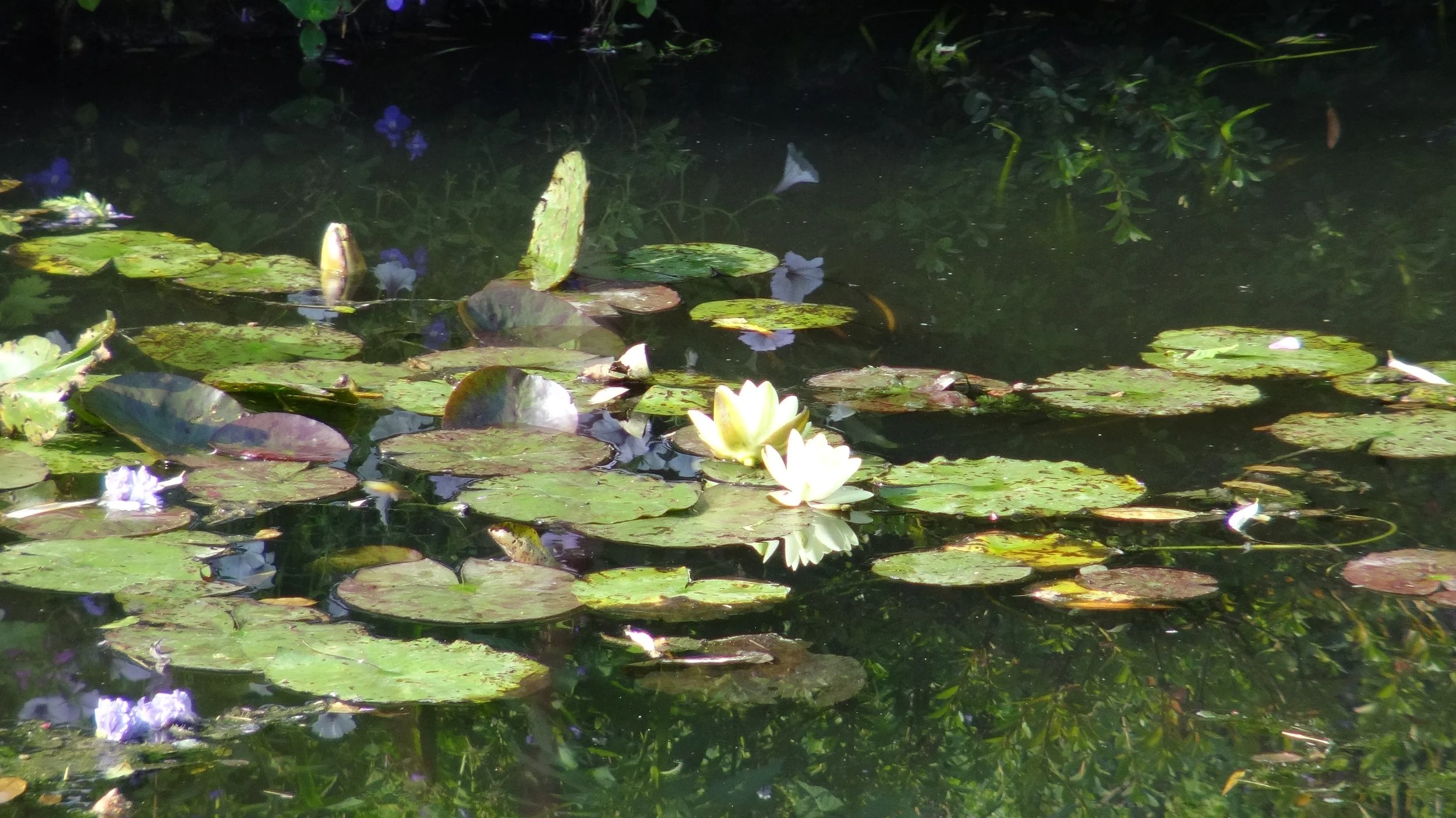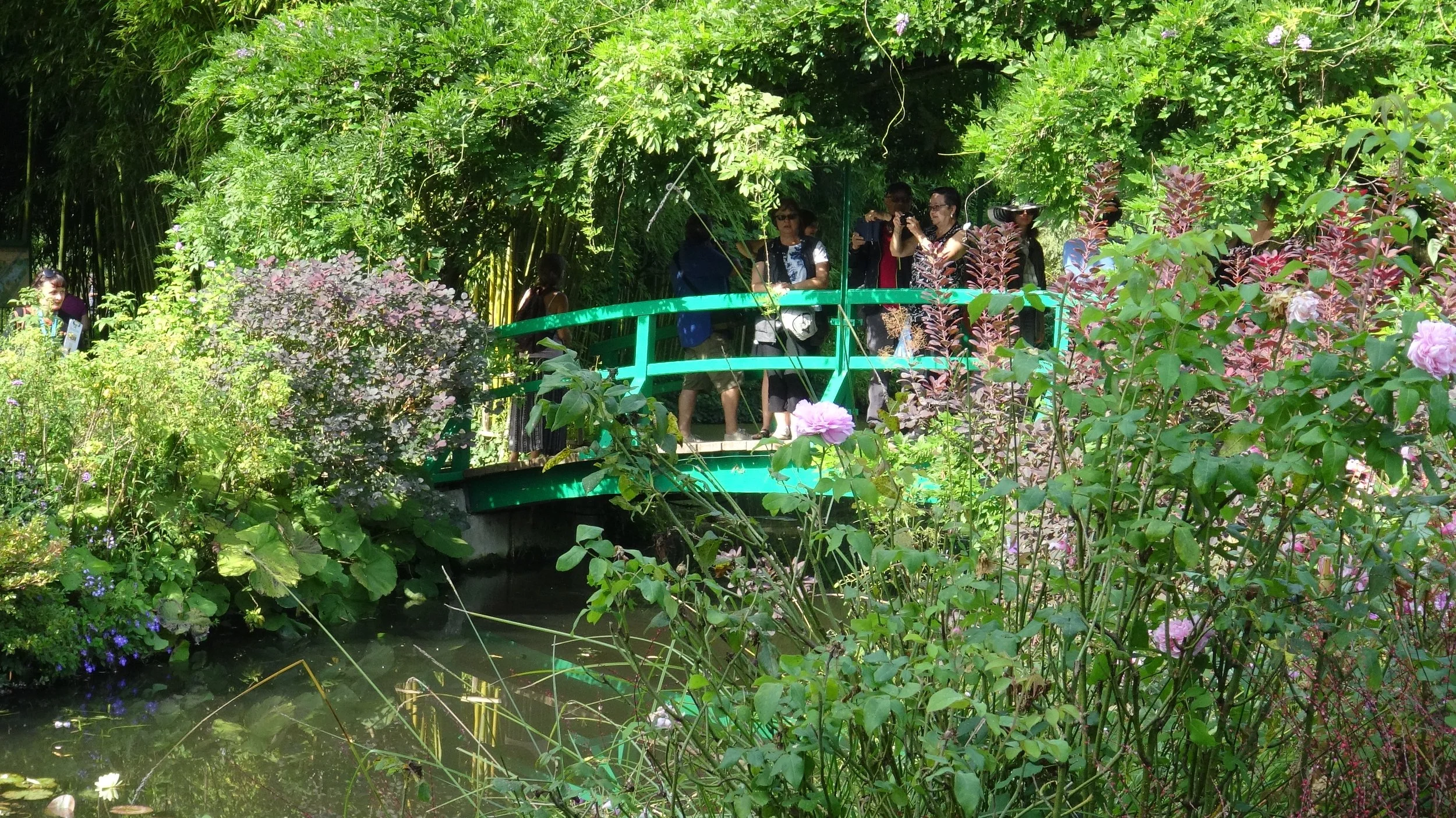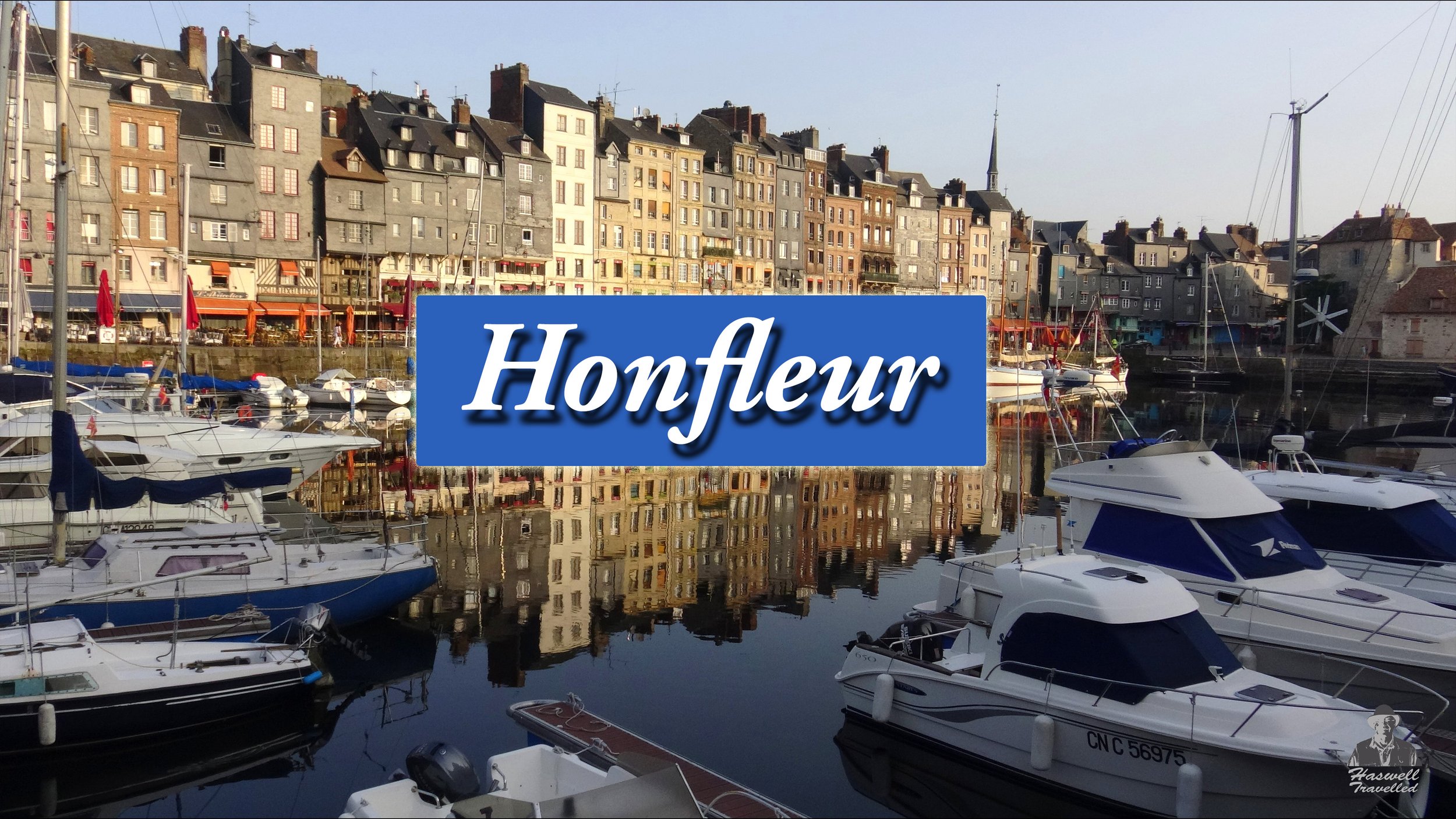
Claude Monet's House & Water Lily Pond in Giverny
Masterpiece of Nature
France’s charming village of Giverny resides Claude Monet’s beautiful home, gardens and famous water lily pond - truly a masterpiece of natural beauty and a legacy to his creativity. We also share some history of Monet to better appreciate his fabulous creations.
Monet’s Water Lily Pond
Giverny
The small village of Giverny lies 75 KM west of Paris. Claude Monet settled here at the age of 40 and would reside for the remainder of his life. Just like his passion for art, he put his talents into decorating of his home, the massive garden park in his backyard, and the famous water-lily pond. Monet transformed the property into a masterpiece which is now enjoyed by busloads of tourists each year.
Our first stop is Claude Monet’s House & gardens, followed by a stroll around the famous Water Lily Pond featured in his numerous paintings. We end our visit with a quick stop at the little church where his grave is located.
Monet's House & Garden
In 1883 Claude Monet moved to Giverny, 9 years after the famous Impressionist art exhibition in Paris. This would be his home for 43 years until his passing in 1926. Monet loved his garden and invested a lot into it. He would exchange plants with friends, and was always on the lookout for new varieties. He liked to organize flowers according to color, and allowed them to grow freely. Monet enlarged the small house to include a large gallery on one end and a big kitchen on the other, with the bedrooms on the top floor. The exterior colors were chosen by Monet. And he added a pergola covered with climbing roses and a Virginia creeper, allowing the garden to grow up toward the house.
Inside Monet's House
We enjoyed touring the house, arriving early in the morning when it opened and wasn't busy. As the day progressed, the wait lines into the house became extremely long.
The Gallery is organized just as it was when Claud lived here, with reproductions of his works on display. The originals are now housed at the Marmottan museum in Paris.
Monet chose all the colors in the house. He also enjoyed decorating the walls with the works of other impressionist friends - such as Cézanne, Renoir, Pissarro, Boudin and others.
After the Gallery, we head upstairs to see the bedrooms. Claude's bedroom has a wonderful view of the garden, where he passed away in 1926. Alice's bedroom is decorated with Japanese art. Alice was Monet's second wife.
Downstairs, we walk through a large bright yellow dining room. Monet gave the kitchen a blue color theme, complimenting the yellow dining room. Blue Rouen wall tiles are a stunning backdrop for the large copper pot collection. The large wood stove is impressive.
The Gallery is organized just as it was when Claud lived here
Kitchen with Blur Rouen wall tiles
Monet's Studio
Exiting the kitchen, we find the barn. This was Monet’s first studio where he painted and stored canvases. Upstairs, he had an apartment with a large bedroom and bathroom. The barn is now the gift shop.
Notice the pictures of Monet on display.
Picture of Claude Monet on display in the gift shop
Claude Monet painting the water lily collection in his studio (now the gift shop)
Water Lily Pond
Walking around Monet's water lily pond is the highlight of everyone's visit. One can only imagine the tranquility Monet felt while enjoying his masterpiece, fixating on the reflections in the pond. Today it can get very busy with tourists. Enjoying a slow stroll, and taking in the views, is what makes the visit truly worthwhile.
There was a time when it was just a field. In 1893, ten years after his arrival at Giverny, Monet purchased the neighboring parcel of land because of the small brook flowing through it. He put in a small pond, and eventually expanded it to its current size. It evolved and became his famous water garden, inspired by pictures of Japanese gardens.
For more than 20 years, it was the subject of his paintings, and he loved to capture reflections in the water. He painted the Japanese bridge series and followed up with his famous giant water-lily paintings – now displayed in the Orangerie museum in Paris.
Start of the walk along the stream
Monet’s Water Lily Pond
Monet’s Grave
A short walk down Rue Claude Monet, you can admire stone buildings which house boutique hotels, galleries and cafes.
We eventually arrive at the local church, Église Sainte-Radegonde, which Monet attended. On its grounds are the final resting place for Claude and his family members.
Church of Église Sainte-Radegonde
Watch the Video
Watch Jim’s video tour of Monet’s house, gardens and water lily pond (click the image below),
and subscribe to Haswell Travelled YouTube channel - much appreciated!
How to Get Here
Tour: A popular way to visit is by tour bus from Paris, as was our first visit. It is nice to have someone else drive, but this is the most expensive option and the crowds can be very large. We took a combo tour that came to Giverny first, then continued to Versailles. Unfortunately, we didn’t have time to tour Monet’s house after we enjoyed the lily pond - the lineup was very long and slow into the house.
Car: Giverny is a 1-hour drive northwest of Paris. On our second visit, we drove from Versailles to Giverny (about 50 mins), arriving in the morning at opening time with very few tourists. There are two large parking lots just a short walk to Monet's house (see map in Giverny section near top of page). On our driving trip through France, we continued from Giverny to Honfleur on the north coast (about 1.5 hours).
Transit: Trains run frequently from Paris to the town of Vernon (50 mins), about 6 KM from Giverny. From Vernon, you can take a bus, a taxi, or rent a bike and ride.
Online Booking: If you are arriving on your own, you may want to consider pre-booking your entry ticket online so you can walk through the gate. Otherwise, there can be a line-up for people purchasing tickets.
Reference
Foundation Monet in Giverny https://fondation-monet.com/ - Non-profit foundation that runs house, garden & pond; Address: 84 Rue Claude Monet, 27620 Giverny, France; Phone: +33 2 32 51 28 21
Exploring Farther Away
Sitting on the north coast of France, Honfleur is truly a journey back in time. For over 1,000 years it played a key role in Normandy’s history, and today has a beautiful harbor, wonderful half-timbered buildings, and many shops & restaurants to enjoy.
France’s lavish royal palaces at Versailles were the envy of monarchs over the world. Although the French Revolution ended its use by French royalty, its palaces are still the definition of luxury, attracting nearly 10 million visitors per year. Also on the grounds, Marie’s charming hamlet is also not to be missed. (No Haswell Travelled page on Versailles yet)
Once the original capital of Viking-controlled Normandy, and Joan of Arc’s last stand, Rouen has a rich history, with museums and a fabulous medieval old town to explore. (No Haswell Travelled page on Rouen yet)


















